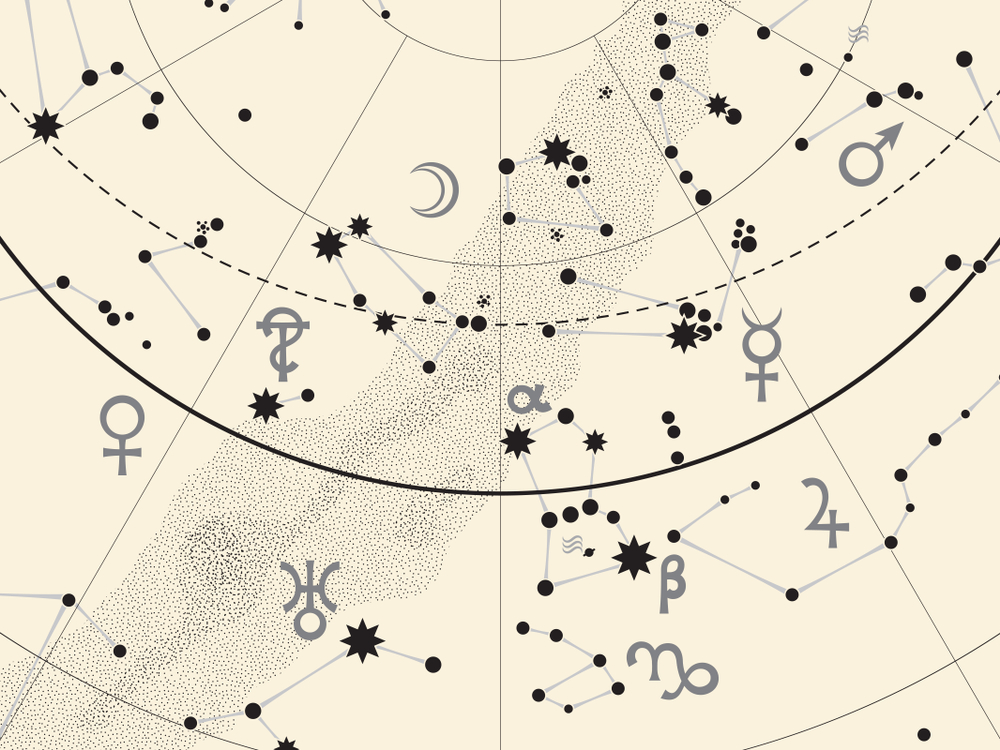
If you’re an astrology enthusiast, you probably know your Sun, Moon, and rising signs. Maybe you’ve pulled up your chart and seen the rest of your planets plus their signs and house placings. Your signs and chart were likely based on the Western tropical zodiac, but many astrologers use the sidereal zodiac for their work. Both sidereal and tropical zodiacs have ardent fans, but which system is the best? The answer is more complex than you may think.
What’s the Big Deal? It’s Zero Degrees Aries
Both sidereal and tropical zodiac systems typically use the same 12 astrological signs, with the Sun taking 30 to 31 days to transit each sign. The key difference between the two is their starting points. Astrological years begin with zero degrees Aries, but tropical astrology always places this point at the spring equinox. Sidereal systems place zero degrees Aries at the point where the Sun actually starts transiting through the constellation of Aries. That’s why sidereal Aries currently starts on April 15 instead of March 21.
Why is there such a huge difference in starting dates? It’s because sidereal systems account for equinox precession. As seen from Earth, the constellations’ positions in our night skies drift about one degree westward each year. This drift results from the movement of Earth’s rotational axis, which also gives us our north and south geographic poles. Solar and lunar gravitational forces pull on our planet, causing the poles’ locations to shift in relation to the stars’ positions. But from Earth, it looks like the stars themselves are moving.
East Vs. West? Not So Fast
Astrologer Samuel Reynolds explains that most sidereal systems use Spica, a star in the Virgo constellation, to determine the year’s starting point. There’s currently a 24-degree difference between sidereal and tropical zodiacs, and sidereal signs start about three weeks later than their corresponding tropical signs. If your birthday falls on April 27 like American musician Lizzo, you’re a tropical Taurus but a sidereal Aries.
Naturally, this can cause a bit of a disconnect for some Western astrology buffs used to the tropical zodiac. Hindu astrology, on the other hand, uses a sidereal system. Hindu astrologers also use nakshatras, or 27 lunar zodiac signs placed along Earth’s ecliptic. They are not the only ones using sidereal astrology; some Western practitioners prefer casting charts and horoscopes with sidereal zodiacs. California-based astrologer Athen Chimenti uses a type of sidereal system based on actual constellation sizes, making some signs last longer than others. Based on Reynolds’s explanation, Chimenti’s approach looks like a form of constellation astrology with the same starting point as typical sidereal systems.
Is There Any Middle Ground?
With two vastly different approaches to the astrological year, can tropical and sidereal systems be reconciled? Astrologer Patrick Watson says “yes.” Many astrologers on both sides of the argument hesitate to brand the other as “wrong,” but Watson suggests a middle path. Each type of zodiac may have different meanings and foci: The tropical is based on the Earth-Sun relationship, and the sidereal on our planet’s relationship to the stars.
Since the Earth-Sun relationship is stable and the Earth-stars relationship is not, Watson proposes, the tropical zodiac represents eternal and unchanging aspects. The sidereal, he adds, speaks to truths for specific eras in time based on the stars’ placements. Watson also suggests renaming tropical zodiac signs based on their ruling planets or the characteristics they represent.
What’s Next for Astrology?
Watson’s suggestions are innovative, but one question remains: What will other astrologers do? It’s possible that both advocates of tropical and sidereal astrology could learn from each other and find common ground. But as the tropical and sidereal zodiacs drift further apart, astrologers will need to grapple with the question and devise solutions that make sense.

